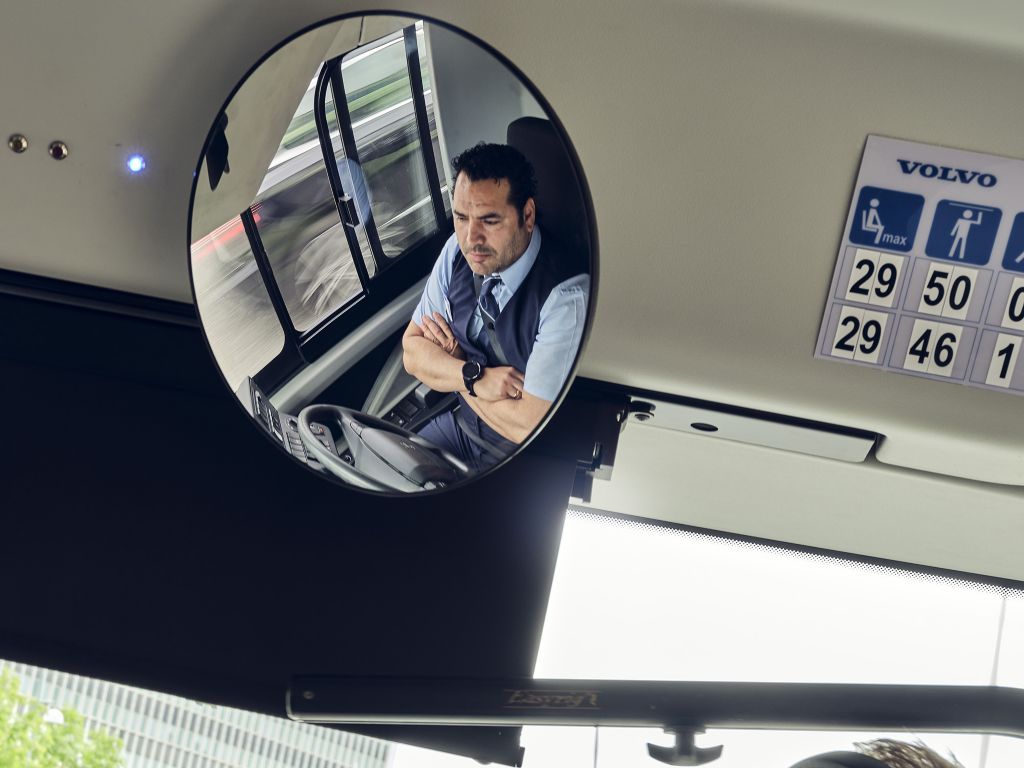Driver feedback helps develop autonomous solutions


During a working shift, a bus driver will make hundreds of stops at bus stations. It is a repetitive manoeuvre that requires a lot of coordination and high concentration. At the same time, it entails an increased safety risk for passengers and other road users.
As part of its research into self-driving technology, Volvo Buses is now testing a concept for autonomous driver support in situations that require high precision and comfort levels for passengers. The system automatically regulates the control and speed of the bus so that it drives in and out of a stop completely autonomously.
Self-driving technology already exists today, but there are many aspects that are still important to consider when automation takes over control of a vehicle.
“With self-driving technology, new opportunities are created to develop innovative solutions that increase safety and improve the driver’s working environment. With this system, the driver is able to focus on what is happening around the bus and only intervene if something goes wrong. As the bus drives at a low, steady speed, the approach becomes more predictable and comfortable for passengers,” says Joakim Jonsson, Project Manager Autonomous Research Projects at Volvo Buses.
Joakim Jonsson is working with autonomous research projects at Volvo Buses.
To find out how bus drivers react to the system, Volvo Buses collaborated with Chalmers to conduct a scientific user study. Ten drivers from the operator Keolis participated, each making 25 autonomous drives to a stop, while being filmed. The drivers answered different questionnaires and were interviewed both before and after driving.
“Self-driving technology already exists today, but there are many aspects that are still important to consider when automation takes over control of a vehicle. For Volvo Buses, it is very important to involve those who will use the technology at an early stage. In addition to finding out how drivers experience what it is like to drive with the system, our study also looked at acceptance and how the solution fits into drivers’ daily activities,” says Joakim Jonsson.
The drivers showed clear tendencies that they trusted the system, especially over time. We could see that they held onto the steering wheel less and less.
The results show that the drivers in the study were generally positive and showed great acceptance of the system. They felt that it was safe and convenient to use, which was also seen in the video material.
“The drivers showed clear tendencies that they trusted the system, especially over time. We could see that they held onto the steering wheel less and less,” says Mikael Johansson, one of the two researchers at Chalmers who worked on the study.
The study also revealed that drivers saw many potential benefits to the system. “One was that the approach to the bus stop became more efficient and precise. When drivers do not have to focus on being at the right distance from the pavement, they can pay attention to things that increase safety. The safety and comfort of passengers in particular was raised by many drivers. They have enormous professional pride and feel great responsibility for their passengers, both those who are onboard and those who have disembarked the bus,” says Mikael Johansson.
Many drivers also believe that the system can contribute to better ergonomics by reducing tension in the neck and shoulders. Furthermore, several participants highlighted how important it is that the system is efficient and adapted to their timetable.
“There was a concern that the run-in would be too slow and that you would have to compensate on other parts of the route. This is exactly the kind of feedback that we had not really considered before. It shows how important it is to have the end user involved and why we need to take their needs into account when developing this type of solution,” says Mikael Johansson.
When the driver activates the system, the bus starts to drive autonomously.
Albert Melo was one of the ten drivers who participated in the study. He has worked as a bus driver for three years and can see several advantages to making the bus drive into bus stops autonomously.
“One of the biggest challenges of being a bus driver in city traffic is to stick to the timetable while also ensuring the safety and comfort of the passengers. A system like this could be a great help, especially in heavy traffic,” he says.
The driver study is another step in Volvo Buses' autonomous journey. “Automation is an incredibly complex and exciting area. These studies give us new and important knowledge that we can take with us into the development of future solutions that can contribute to making public transport safer, more efficient and more sustainable,” says Joakim Jonsson.
The study Bus drivers acceptance of a Narrow Navigation System was initiated by Volvo Buses and conducted with researchers from Design & Human Factors at the Chalmers University of Technology. The research project is part of Drive Sweden's project KRABAT, which is part-financed by Vinnova.